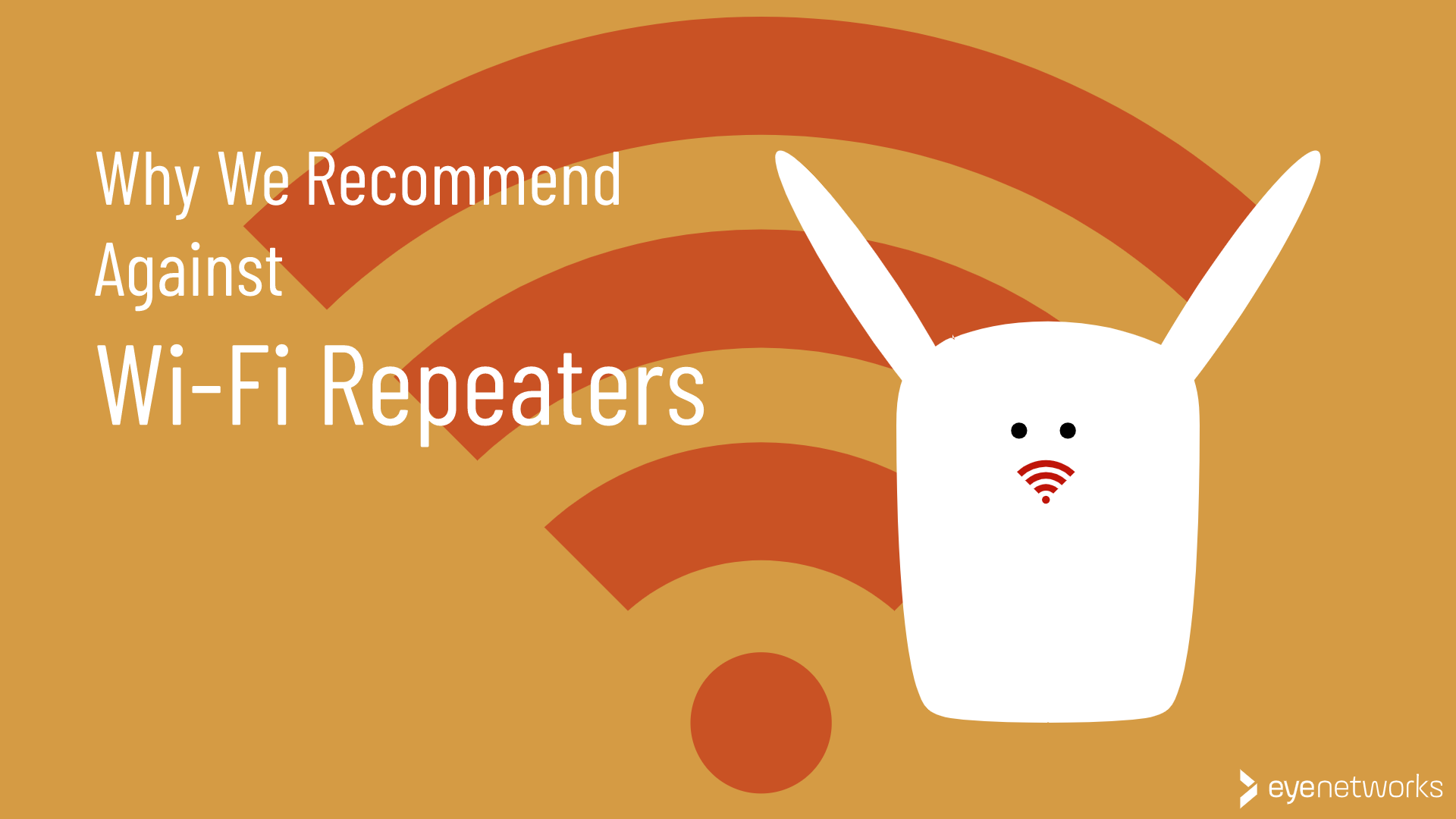Repeater, extender, booster: Call it what you want, but one of the most common advice against coverage issues is also one of the worst. We have alternate advice.
A common piece of advice for home users who have problems with wireless coverage is to buy a wireless repeater, frequently also referred to as extenders or boosters. This is a small device that can send Wi-Fi signals on to parts of the home where there is bad or no coverage.
A Wi-Fi repeater is often seen as a quick and inexpensive solution to coverage issues with your wireless network. But chances are unfortunately that a repeater does not solve the problem and thus is a waste of money.
Here we give you five good reasons to steer away from repeaters – and some advice on what you can do instead.
1. Wireless repeaters really amplify nothing and can make matters worse
A typical repeater uses the wireless router’s capacity in the same way as anything else that connects to the wireless network. It is not an independent access point. The signal is not actually boosted or amplified, it is repeated (hence the name repeater).
It is very important that the repeater itself achieves the best possible coverage from the router where it is located. If your repeater has insufficient coverage, it can actively help make your entire Wi-Fi network worse.
See also:
- Bad apple: How One Device with Bad Coverage Can Spoil Your Wireless Network.
- Wireless Coverage: What You Should Know
2. Wireless amplifiers are often complicated to set up
The repeater will usually have its own network name (SSID) and password, which differs from the SSID of the router and any other amplifiers in the home, and that are not automatically synchronized when the other device’s SSID is updated.
See also: SSID / Network Name Selection: Five Things to Consider.
3. Wireless Repeaters Are Often Complicated to Use
Because each repeater usually has its own SSID, everyone using the network must relate to multiple network names and passwords and manually choose to move from one network to another.
In a large home with multiple repeaters, this can quickly become a lot to keep track of. For example, you can end up staying connected to the repeater even when connecting directly to the router would have given you better performance.
A mesh network with client steering, band steering and common SSID is a much better option, because the network then automatically makes sure that each device connects to the access point and frequency band that gives the best performance. The user should not need to think about which access point each connection goes to.
See also: Why band steering means better Wi-Fi.
4. One-Radio Repeaters Halve the Capacity
If your repeater has only one wireless radio, it will typically be on the 2.4 GHz frequency band. The repeater will then use half the time to communicate with wireless clients (PCs, mobiles and other devices) and the remaining half to relay traffic to the router.
This means that the capacity will be halved, so you can only send half the amount of data you would be able to send if communicating directly with the access point at the same speed.
This type of repeater will also require all clients to connect to the 2.4 GHz band, which has a lot of interference. New clients that support 802.11ac or 802.11ax (Wi-Fi 6) and the 5 GHz frequency band, will not be able to take advantage of this technology.
5. Two-Radio Repeaters Still Provide Half the Capacity in Many Scenarios
The vast majority of new Wi-Fi repeaters only forward signals at the frequency they receive them.
That is, if a PC or other wireless device communicates with the amplifier using the 2.4 GHz frequency band, the amplifier will also communicate to your router on 2.4 GHz, even if both the repeater and the router support 5 GHz.
If the repeater had been able to communicate with the router on the 5 GHz band, it would have gained more capacity and consumed less airtime, which is the “talk time” available on the network.
If a repeater communicates with a device on the 5 GHz band, but the repeater itself has insufficient coverage from the router, it can also become a “bad apple”. Then the repeater consumes all the capacity and throttles performance for all other devices on the network that use 5 GHz.
Which is how you risk sitting right next to your router with a brand new laptop and still see Netflix go to “buffering”.
What Can You Do Instead of Buying a Wi-Fi Repeater?
- Before you buy any new equipment, measure your current coverage with a heatmapper so that you know where your problem areas are. See Mapping Your Wireless Network with a Heatmapper to get started.
- Make sure you have already done what you can to maximize coverage and performance in other ways. Se 18 free tips to improve your home Wi-Fi.
- If you are still experiencing coverage issues, we strongly recommend that you try wifi mesh.
And whatever you do: Don’t. Boost. Your Wi-Fi Signal.
Article by Geir Arne Rimala and Jorunn Danielsen
